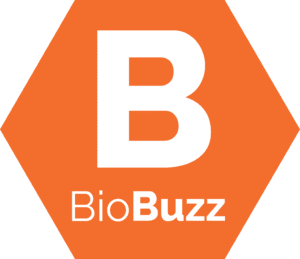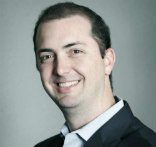
The BioBuzz on… Harpoon Medical’s CEO Bill Niland via original post on 4.4.2014
Given Harpoon Medical’s success and recent acquisition by Edwards Life Sciences we wanted to bring back this post from our archives for a Throwback Thursday reflection on how much can happen in just a few years. Congrats to Bill and all of the Harpoon team on the great success.
 Leader: Bill Niland, President & CEO, Harpoon Medical
Leader: Bill Niland, President & CEO, Harpoon Medical
Location: Stevensville, MD
Started in: 2013
Overview: Harpoon Medical, Inc. is a privately held medical device company developing technology for the treatment of heart disease. The company’s lead product is an image-guided, minimally invasive surgical tool for mitral valve repair.
Goal: Harpoon is developing its first prototype devices
now with the goal of conducting first-in-man testing before the end of 2014.
Customers: Departments of cardiac surgery at hospitals
Q&A with Bill Niland
How have your previous experiences in the healthcare industry prepared you for your current role as President & CEO at Harpoon Medical?
My first two companies were more service related, but still about starting from scratch, and hiring the right employees. Then, with Vapotherm, I had a large role in running the company after I founded it. While there, I learned a lot about the regulatory rules and guidelines in the U.S. and worldwide, the importance of a company’s intellectual property portfolio to investors, and about raising money.
In my career so far, I’ve learned that while everybody has great technology, most startups fail because they don’t raise enough money to get the technology to the market and across the finish line.
What are the main challenges you faced when starting Harpoon?
The first challenge was working out a good licensing deal with the University of Maryland, Baltimore. We ended up with an agreement that is good for both sides – the company and the University. Another challenge has been to conserve our money on hand the best we can while we are fundraising. It is never easy and always takes longer than you expect.
The venture capital market has changed a lot since I first started Vapotherm. VC’s don’t necessarily want to participate in seed rounds. They want companies to be further along in their development. This means we have had to learn a whole new resource base for early-stage funding for Harpoon through family offices, private individuals, and angel investors.
Personally, it was also challenging for me to move from a background on the respiratory side of the device industry to the cardiac side. I needed to get up to speed on the heart very quickly. This was made easier thanks to our inventor (James S. Gammie, M.D.), an esteemed heart surgeon at the University of Maryland Medical Center who is on staff at the University of Maryland School of Medicine and a great teacher.
How did you meet Dr. Gammie?
I met Dr. Gammie in 2009 or 2010. My mother in Buffalo was told she needed an aortic valve replacement. She had been a cardiac nurse and had heard horror stories about people going on heart-lung bypass and having memory issues. I found out about Dr. Gammie’s process of doing aortic valve bypass on a beating heart. When he determined her to be a good candidate for his procedure, he agreed to operate.
As we talked about the operation, I introduced him to Vapotherm’s High Flow Therapy and suggested he consider putting her on it after the operation. I asked him why patients failed after surgery, and he explained that it was often older people who failed to breathe deeply when they come out of surgery, particularly older women. When he realized that the Vapotherm technology would enable these patients to do the deep breathing, he became an advocate for Vapotherm.
Fortunately, my mother’s surgery was a success and Dr. Gammie and I developed a friendship while I was still at Vapotherm. He introduced me to other large academic institutions and Vapotherm picked up new accounts.
Fast forward to last spring: Dr. Gammie and I met, and he told me about the Harpoon concept. He outlined the need for a company to be established to allow for the product to be commercialized, and asked if I could help him. Vapotherm was in transition and I was ready for a new challenge, so I figured out a way to keep an interest in Vapotherm and to start up Harpoon. As of January 1, 2014, I joined Harpoon full-time.
How did you form your leadership team? What skills/attributes did you look for in each member?
Experience is always the number one factor for me. Experience in the medical device industry is even better. We needed people who knew the rules and regulations, and I went to people who I’ve worked with in the past. The team came together as I found the best people I knew or whom someone I knew knew.
Your company is focused on a cardiac device: Why this space and why now?
I did my homework and due diligence and realized there was an opportunity for good margins in the cardiac product space. It is also a good place to recruit investors and to build a strong business with great valuation.
I also liked the Harpoon device because it has no software and no electronics. The regulatory pathway is a lot easier when you have fewer moving parts.
Our device is also totally disposable. The surgeon throws it away after each patient and uses a brand new device on the next patient. There’s elegance in its simplicity.
What makes Harpoon different from other device companies in the same market space?
To me, it’s about what it can do for patients. Today, 99 percent of mitral valve patients undergo open heart surgery. It is a big operation to cut a chest open for five hours in the operating room. There are 4 million people with the disease in the US and only 50,000 to 60,000 get operated on each year. As the population ages, many more people age 65+ will experience mitral valve disease because we are living longer than the valves were designed to last. This condition can impact life greatly because it wears you out, and leaves you out of breath.
With a very simple incision, the Harpoon device could be inserted in what will usually be about a one-hour procedure that may eventually be done with a scope. Our procedure will allow patients go home more quickly, and get back to normal activity within a week versus three to four weeks following open-heart surgery. Also it will reduce the risk of infection as well as further complications associated with more intense surgeries.
As we get the Harpoon device into the marketplace, we hope to be able to teach more cardiac surgeons to perform this faster and less invasive procedure using the Harpoon device in their patients. There is a large population of people who suffer from mitral valve regurgitation because they are not able or do not want to undergo open heart surgery. It’s exciting to think that we could have a significant and lasting impact on the health of a lot of people.
What are the near-term milestones for Harpoon? When should we next expect to hear about the company?
We froze modifications on the current device so we can conduct a first-in-man study before the end of this year with a group of 8 to 10 patients.
How do you feel about the present startup environment for life sciences companies in Central Maryland?
From a workforce perspective, some business leaders feel you can’t recruit enough experienced people in Maryland to run a large medical device company. I want to demonstrate that this belief is simply not true. It can be challenging to recruit medical device engineers, but I know the talent is here.
From a local fundraising perspective, we are very happy with the support we’ve received from the University of Maryland, local organizations designed to support the life science community and the State, but I wish there was a stronger local investment community. With the federal government, National Institutes of Health, Food & Drug Administration, the University of Maryland and Johns Hopkins all here, it’s surprising that more venture capitalists don’t focus on the Mid-Atlantic region. One goal at Harpoon is to leverage the early grant support we have received from BioMaryland, TEDCO and the University to create a compelling investment opportunity that will expand the local life sciences community. The more successful life science companies we build in the area, the easier it is for everyone in the local industry.
What specific advice would you offer to a first-time entrepreneur?
Make sure you have a sound financial plan; it’s all too easy to jump in without one. Meet your goals, and prove to your investors that you can hit your targets and do what you say you are going to do. Always be mindful to stay on budget, and be honest with your investors and shareholders.
To learn more about Harpoon Medical, visit www.harpoonmedical.com.
This article is based on a conversation between Mr. Niland and Jamie Lacey-Moreira in March 2014. If you’d like to recommend a CEO or leader for a BioBuzz profile, please contact Andrew Eckert.
- About the Author
- Latest Posts
Over the past 11 years, Chris has grown BioBuzz into a respected brand that is recognized for its community building, networking events and news stories about the local biotech industry. In addition, he runs a Recruiting and Marketing Agency that helps companies attract top talent through a blended model that combines employer branding and marketing services together with a high powered recruiting solution.




